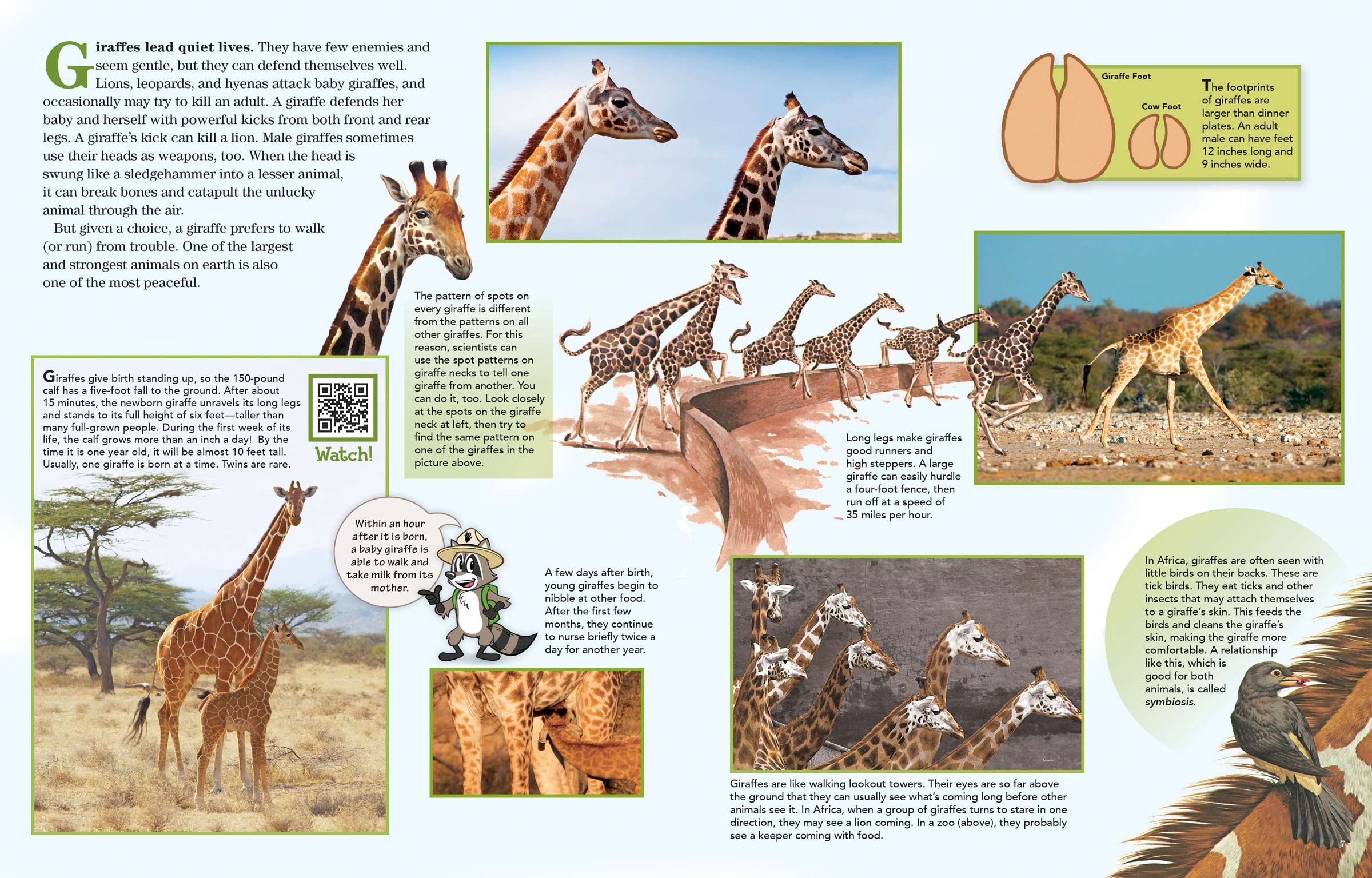
Quiet Lives
ByGiraffes lead quiet lives. They have few enemies and seem gentle, but they can defend themselves well. Lions, leopards, and hyenas attack baby giraffes, and occasionally may try to kill an adult. A giraffe defends her baby and herself with powerful kicks from both front and rear legs. A giraffe’s kick can kill a lion. Male giraffes sometimes use their heads as weapons, too. When the head is swung like a sledgehammer into a lesser animal, it can break bones and catapult the unlucky animal through the air.
But given a choice, a giraffe prefers to walk (or run) from trouble. One of the largest and strongest animals on earth is also one of the most peaceful.
The pattern of spots on every giraffe is different from the patterns on all other giraffes. For this reason, scientists can use the spot patterns on giraffe necks to tell one giraffe from another. You can do it, too. Look closely at the spots on the giraffe neck at left, then try to find the same pattern on one of the giraffes in the picture above.
Giraffes give birth standing up, so the 150-pound calf has a five-foot fall to the ground. After about 15 minutes, the newborn giraffe unravels its long legs and stands to its full height of six feet—taller than many full-grown people. During the first week of its life, the calf grows more than an inch a day! By the time it is one year old, it will be almost 10 feet tall. Usually, one giraffe is born at a time. Twins are rare.
Within an hour after it is born, a baby giraffe is able to walk and take milk from its mother. A few days after birth, young giraffes begin to nibble at other food. After the first few months, they continue to nurse briefly twice a day for another year.
The footprints of giraffes are larger than dinner plates. An adult male can have feet 12 inches long and 9 inches wide.
Long legs make giraffes good runners and high steppers. A large giraffe can easily hurdle a four-foot fence, then run off at a speed of 35 miles per hour.
In Africa, giraffes are often seen with little birds on their backs. These are tick birds. They eat ticks and other insects that may attach themselves to a giraffe’s skin. This feeds the birds and cleans the giraffe’s skin, making the giraffe more comfortable. A relationship like this, which is good for both animals, is called symbiosis.
Giraffes are like walking lookout towers. Their eyes are so far above the ground that they can usually see what’s coming long before other animals see it. In Africa, when a group of giraffes turns to stare in one direction, they may see a lion coming. In a zoo (above), they probably see a keeper coming with food.

